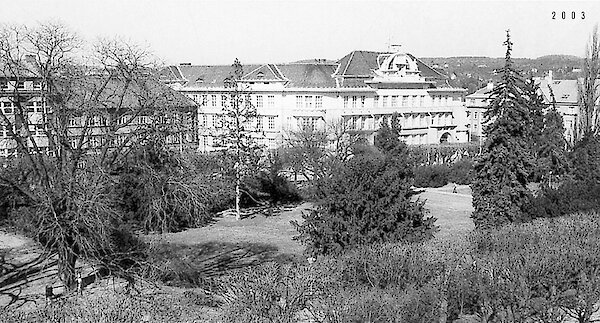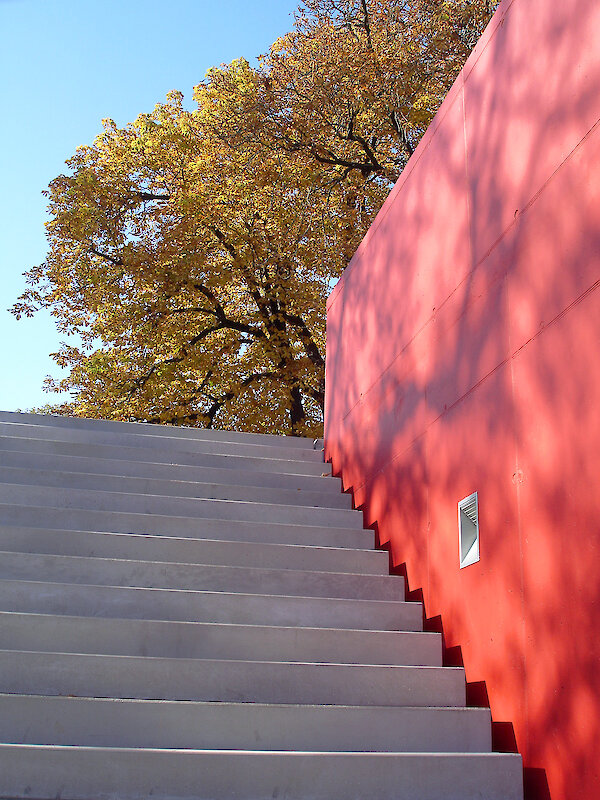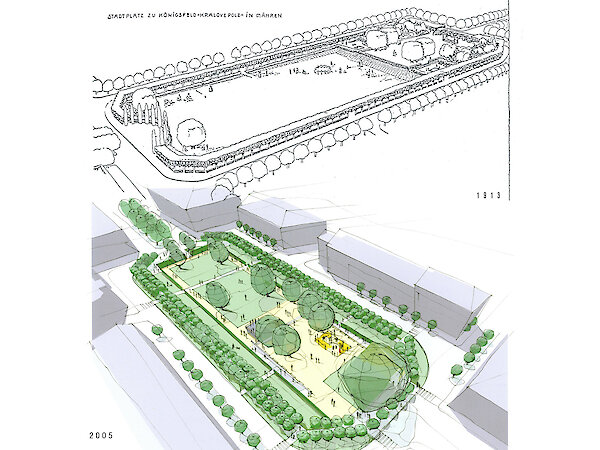Archive
Zdeněk Sendler, Radko Květ, Júlia Bobríková (Brünn)Parks aus den letzten hundert Jahren - 1913: Slovanské náměstí - Restoration of a Modernist Park by Leberecht Migge
7.12.2023, 19:00 Uhr Depot: Breite Gasse 3, 1070 Wien

Slovanské náměstí, A district park by Leberecht Migge (1913); Restauration 2006 by Sendler and Květ.
Zdeněk Sendler, Landscape architects and Radko Květ, Architect, Brno
English translation: Júlia Bobríková, Landscape architect at studio Sendler, Brno
Moderation: Ulrike Krippner, Institute of Landscape Architecture, BOKU, Vienna
Lecture and Discussion in english
For more than a century, parks have responded to climate and social challenges. The lecture series explores the role of parks in the urban environment. The first lecture presents a park designed by the modernist and 'life reformer' Leberecht Migge in 1913 and restored in 2006. The landscape architect and the architect who restaured the park explain their findings on the original design, the role Migge envisaged for the park and how they have interpreted the restoration work.

Brno is not a big city. Here, everyone knows everyone else. And so it happened that an architect (Radko Květ) and a landscape architect (Zdeněk Sendler) met in a pub and, after a few beers, found out that they share an admiration for modern architecture as well as for history... And so they set up a joint architectural studio, half inherited from painters and half built in an old attic. Many years of cooperation, a lot of work that remains unused, misunderstood, but on the other hand, a lot of work that brings people joy. The monastery gardens in Litomyšl, public parks in Karviná, Jičín, Brno or Prague. Many houses with private gardens and, last but not least, the revitalisation of the Slovanské náměstí park in Brno. A park that has captured our hearts. It is aging beautifully, mainly because its founding father was Leberecht Migge.

LX Vortragsreihe Landschaftsarchitektur
Parks aus den letzten hundert Jahren (1913-1978-2020)
Der gestaltete Grünraum und das (soziale) Klima
Die enge Verknüpfung der Landschaftsarchitektur mit den natürlichen Gegebenheiten - Topographie, Vegetation, Ökologie bis hin zu den klimatischen Bedingungen - macht sie heute zu einer Disziplin, die die notwendige Transformation der anthropogenen Lebensräume in Richtung Klimaverträglichkeit und Biodiversität vorantreibt. Gleichzeitig ist sie über ihren Kern-bereich, den öffentlichen Raum, gefordert, sich den grund-legenden sozialen und gesellschaftspolitischen Fragen zu stellen. Beides fließt in die Gestaltung ein, die sich mit den jeweils aktuellen Fragen der räumlichen Übersetzung und ästhetischen Manifestation auseinandersetzt. Die Aspekte lassen sich am Beispiel des urbanen Parks untersuchen. Drei zeittypische europäische Werke aus den letzten hundert Jahren zeigen, welche Fragen die Landschaftsarchitektur beantwortet, wie sich diese entwickelt haben und was Parks dauerhaft leisten müssen.
Parks of the last hundred years (1913-1978-2020)
Designing green spaces and (social) climate
The close link between landscape architecture andnatural conditions - topography, vegetation, ecology and climatic factors -makes it a discipline that drives the necessary transformation of man-madehabitats towards climate compatibility and biodiversity. At the same time,through its core focus on the public realm, it is a discipline which is at theforefront of fundamental social and socio-political issues. Both of theseaspects flow into the design, which is concerned with the current issues ofspatial translation and aesthetic manifestation. These aspects can be analysedusing the example of the urban park: Three typical European works from the last hundred years illustrate the questions that landscape architecture answers, how they have developed and what parks need to achieve in the long term.